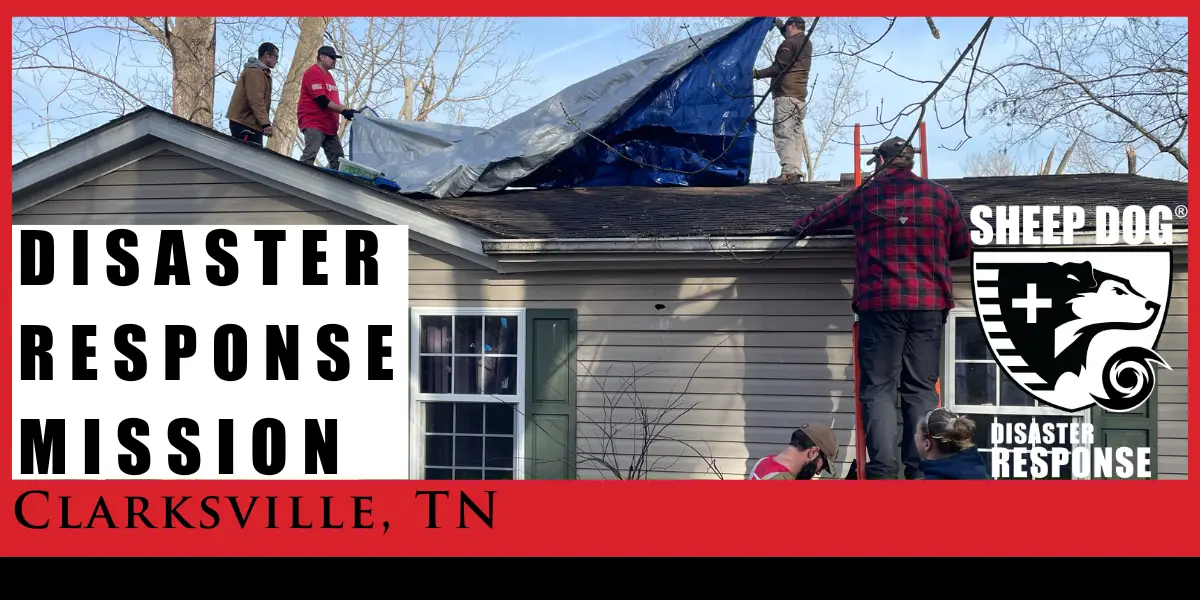The Sheep Dog Impact Assistance Disaster Response team is on the ground in Clarksville, TN assisting residents in the aftermath of last weekend’s tornadoes.
All donations go to help replenish supplies and provide fuel for chainsaws and vehicles as our team remains in Tennessee.
